What to do if the sewage system is frozen: 4 effective ways
Features of the wastewater disposal system from a residential building, in most cases, exclude the formation of ice in the winter. But as a result of the unfavorable confluence of several negative factors at once, such a nuisance may still occur. It was then that the question of what to do is of particular relevance — if the sewage system is frozen in a private house.

Causes of ice formation in sewer pipes
The presence of an ice plug in the waste disposal system is quite a serious nuisance that does not allow using all sanitary appliances in the dwelling. But it is not enough just to melt the ice.
Before you unfreeze the sewers - if they are frozen, the cause of the phenomenon itself should be eliminated. Otherwise you will face this scourge constantly.
The most common causes are errors made in the design and (or) installation of the system, as well as violations of the rules for its operation.
Consider the most common factors causing freezing sewer system:
- Insufficient pipe slope or use of products of smaller diameter than necessary. In this case, the wastewater is moving inside the system at low speed. If the ambient temperature is low enough, this mass may freeze. Such a blockage is very difficult to eliminate, since the cork will have a considerable length.
- Improper arrangement of an individual septic tank for sewer system. If the area of filtration fields is insufficient, or the drainage pipes are deepened slightly, the water will not leave the sump at the desired speed. As a result, the latter will overflow, and the liquid will accumulate, and freeze in the pipes of the sewer system.
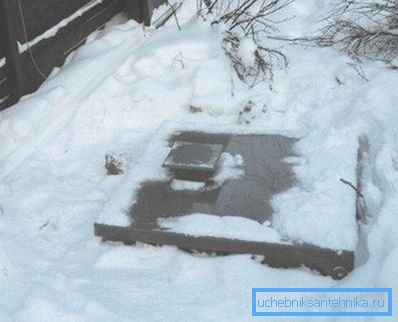
In this case, before breaking through the frozen sewage system, you should pump out the waste from the septic tank.
Note! It will be impossible to completely eliminate the shortcomings of the sewage drainage system from the house during the winter period. Pumping will need to be carried out regularly before the onset of heat. After thawing the soil, the filtration fields should be reinstalled and correctly.
- Blockage. This banal reason sometimes causes the formation of an ice block, which requires the implementation of measures to thaw the system.
- Water leaks from the water mains. If a small amount of water constantly leaks from the faucet or toilet bowl, this can lead to the formation of ice in the sewage system. A small stream, freezing layer by layer in the system, can cause the formation of a serious and extensive ice block.

Troubleshooting methods
As soon as the cause of the trouble is established, proceed to measures to eliminate it. The whole process of work is not too complicated, which allows you to cope with the ice plug with your own hands.
Even when you do not know what to do if the sewer pipe is frozen, do not panic.
First you need to install:
- where the ice block formed;
- what is the length of the blocked area.
Based on this data, a suitable technology is selected.
Method 1. Using hot water
This is a simple, reliable and widely used method. It is necessary to heat a large amount of water, add salt to it and pour into the sewage system until the ice is completely removed.
The considered method has two indisputable advantages:
- simplicity;
- by efficiency.
Note! Solving the problem in this way is possible only when the ice block is small in size and is located close to the drain points. Otherwise, the water will cool down, not reaching the problem area.
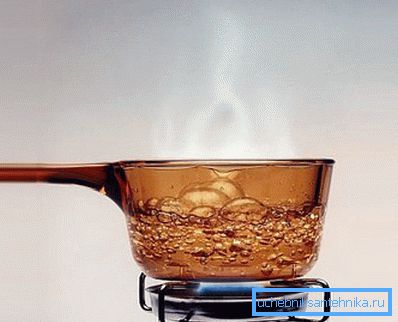
Method 2. Heating a blowtorch
What to do if the sewage system made of metal or cast iron pipes has frozen? In this case, a soldering lamp will help. When the system is laid in the ground, you should first expose the pipes, which is quite laborious, especially in the winter period.
The considered method is absolutely not suitable for heating plastic pipes, since a strong flame will simply melt the material.

Method 3. The use of steam
So you can effectively heat the plastic pipe from the inside. The only drawback of this method is the need to use a steam generator that produces a powerful jet of hot steam.
Tip! If you do not want to purchase this device for personal use, you can use the services of companies that specialize in eliminating problems with sewage. But the price of their services, as a rule, is quite high.
Instructions for eliminating blockage is very simple and consists of several sequential actions:
- the device starts;
- the steam line is inserted into the sewer pipe and moves to the place of formation of the ice block;
- as it thaws, the tip moves on until the problem is completely eliminated.
The undoubted advantage of this method is its simplicity and security. Minus, as already mentioned, should recognize the need to purchase or lease a special unit.
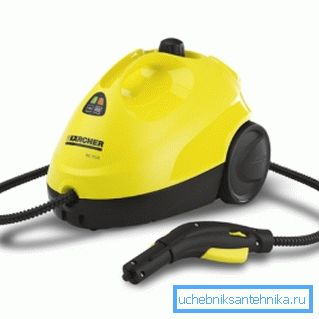
You can destroy the ice plug and by hydrodynamic washing, which also requires the appropriate installation. In this case, instead of steam, the heated medium is heated water that is injected under strong pressure.
The method is effective in that, in addition to thawing ice, it helps to eliminate blockages, as well as to check the tightness of the sewer system throughout its length.
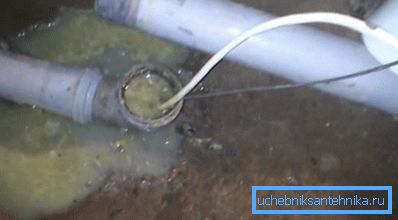
Method 4. External impact
In addition to the soldering llama, it is also possible to heat the pipes outside with an electric current. Naturally, the sewer system in this case must be made of metal.
In this case, along the edges of the problem area, conductors are fixed, through which electricity is supplied. Under its influence, the pipe is heated and the ice is melting.
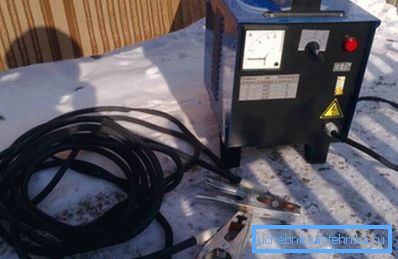
It is possible to get rid of a blockage from the outside of the plastic pipe using the following means:
- heat gun;
- heating cables with which the pipe is braided.
Conclusion
It is unlikely that you will be delighted with the procedure of defrosting sewer pipes. After all, work is often done on the street in a bitter cold. Therefore, even at the design stage of the sewer system, care should be taken to protect it from freezing. More details to deal with this issue will help the video in this article.